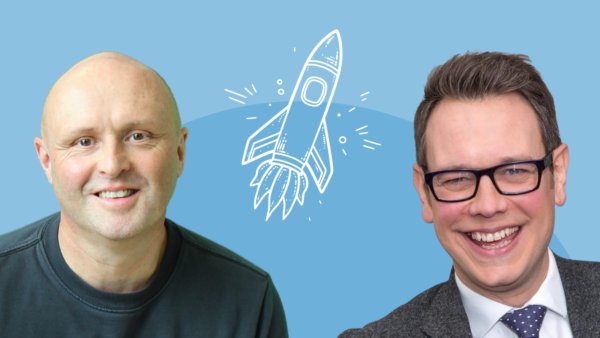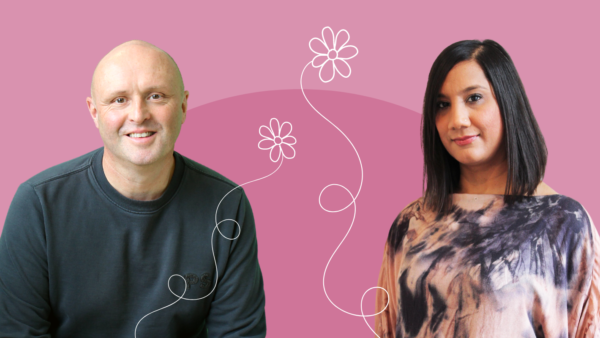Your organisation may be strengths-ready, but is it strengths sustainable?
I recently recorded a podcast on how you can know if your organisation is strengths-ready and went through a checklist of elements to help you decide whether your organisation has a fair shot of deploying the strengths approach successfully. If that’s of interest, that podcast is at Season 16, Episode 7 and is called ‘How can you tell if your organisation is strengths-ready?’.
But what about making sure the approach beds in and lasts over time? Today’s podcast takes you through an 8-point plan for making sure that your strengths-based approach doesn’t just have the best chance of a strong start but will ensure that it sticks long term. This is based both on my own 17 years of experience bringing the strengths approach to clients, as well as on conversations I’ve had with Strengthscope’s Head of Training and Integration, Scott Christie. And if anyone knows, Scott knows.
Why bother with strengths anyway?
The science on the strengths approach is increasingly clear – those organisations that roll out the approach are more likely to be successful in terms of sales, profit, customer engagement, staff retention and staff engagement (Rigoni and Asplund, 2016). It makes sense intuitively, too – if you help people focus their day-to-day activities and personal development on those areas where they already shine or have the potential to be outstanding, they are more likely to stay the course and achieve sustainable high performance. So it’s worth the effort. But how can you make sure your efforts don’t fade away and become an example of ‘tried it and didn’t work here’.
Here’s my 8-point plan for strengths sustainability…
-
C-suite sponsorship
If you want to get any initiative moving quickly (not just a strengths-related one), you need active advocacy from the top of the organisation. My advice on this – give your senior leadership team an experience of the strengths approach. Demonstrate what it looks like, perhaps in a team context, why it’s useful, why it’s different and how it can help them personally and collectively better deliver on their objectives.
This doesn’t need to be a huge undertaking – just enough to get the top team on board and open to the idea of developing a rollout plan that will see the approach take root and gain momentum. So much better if one or more members of the SLT are happy to put out internal or external messages around the value of adopting a strengths approach. This really matters to the people charged with taking out strengths-based initiatives into the business – C-suite sponsorship really matters, particularly when it comes from a position of personal experience, as it makes their advocacy much more relatable.
-
Strengthen your recruitment and onboarding processes
The recruitment process provides a really important opportunity to show prospective new employees, as well as those who actually go on to join the organisation, that they are being welcomed into a strengths-based organisation where who they are at their best really matters.
As an applicant, if you are given a strengths experience during the recruitment process, this will set the expectation that your hiring manager will know your strengths and will be keen to support you in bringing them to your role from day 1. Which means that your onboarding process also needs to be aligned to the strengths approach, giving new joiners the opportunity to talk about how they can bring their strengths to their new team and to their role ASAP. So managers need to be talking strengths language (more on that in a moment).
In our experience at Strengthscope, we’ve also found that employers who provide a strengths experience to all applicants, e.g. by giving them a strengths report whether or not they are successful, send out a consistent message that yours is a truly strengths-based organisation. And that can be very positive for the employer brand. Word quickly gets around that yours is an organisation which cares about everyone who applies, not just those who are appointed, providing them with something useful that they can use in their work lives day to day, take to other recruitment processes, and help them make better career decisions. One of our clients, Siemens, has had over 100,000 applicants complete Strengthscope as part of a drive to strengthen their recruitment process and employer brand.
-
Gain manager buy-in
Managers are always always busy. Many managers won’t have had formal management training and will have just had line management responsibility added to their already hectic work lives. So how can you show managers that the strengths approach isn’t just another HR initiative that will add bureaucracy but not much more to their already high-intensity work week?
Managers like stuff that helps them do their jobs better, takes some of the load off and delivers a higher level of team performance. If the strengths approach delivers some or all of that, managers will buy in. My advice, therefore is to ‘show, don’t tell’. Go light on briefing managers, but provide an experience for them so they understand what the approach is and isn’t and how to get the best from it.
And try and keep any strengths content self-serve so that employees are bringing value-adding ideas to their manager rather than the manager having to push for people to use the approach. This will also create advocacy across the employee base – because they’re getting value, staff will keep coming back and that creates more and more pull for the approach.
-
It’s only going to be useful if it makes a practical difference
Supporting people to apply their strengths in areas that matter, for example, in their job roles, when facing change, for teams, for leaders, will reinforce the value of investing time referring to strengths. Make sure that you’ve thought about where the strengths approach can be woven through your people processes. Can it be included in existing leadership or management development programmes? Appraisal training? Personal development planning? Change management initiatives? Team workshops? Brought in to manager 121s to help people role craft around their strengths? Or all of the above!
Wherever you can introduce strengths practically, it will help people see the value. And they will come back to it, which will make it sticky and longer lasting.
-
Build in-house expertise
As well as your C-suite being active advocates and managers being neutral to supportive, it’s also important to build a base of expertise. This may come from your HR or L&D communities or it may be that it comes from a broader group, perhaps including supportive line managers or those who feel passionate about the strengths approach and who want to develop their own skill set to be able to run group or team workshops, provide debriefs or coaching sessions and to be consistent strengths gurus that people can come to if they’re unsure of something.
It’s always better to develop this expertise in-house rather than to outsource it, so invest in a group of engaged folk who can continue to carry the strengths message to the organisation. Some of our clients who have had the greatest success embedding the strengths approach into their organisations have taken the approach of flowing expertise right the way through their organisation. Examples include Cafcass (the UK’s Children and Families Court Advisory Service) and PR agency Fleishman Hillard.
-
Leverage your Comms and Marketing teams
It’s really important that people hear about the new approach that your organisation is taking and how it’s making a difference. So make sure that your comms and marketing teams develop compelling messaging, enticing and encouraging employees to check out all the great strengths content that you’re now hosting, reminding them to go back to their strengths profile for inspiration on how to meet and beat challenges, face into change, work with others effectively, lead authentically and so on and so on.
But it’s not all about using formal channels of communication…
-
Teams can be a great reinforcer
Increasingly, we’re seeing the most strengths-successful organisations as those who encourage their teams to use strengths. Why? Teams can benefit massively from strengths as a group and as individuals because the approach encourages meaningful collaboration, the development of a consistent language for feedback, and better awareness of the strengths and risks within the team and, therefore an improvement in teams delivering on their objectives.
Also, team-to-team peer influence is a powerful force for change, allowing the strengths approach to spread through storytelling and informal recommendation and referral, which embeds the approach quickly through the informal grapevine. And that can help ensure that the strengths approach becomes ‘viral’ in the organisation, again increasing the longevity of the approach.
-
Commit for the long term
Finally, when you’re looking to create a long-lasting change in an organisation, it’s important to commit for the long term. A year of introducing strengths will see proof of concept. Two years will start to yield measurable results. Three years and more, and you have a good chance of baking in the approach long term. That’s true of any long-term change initiative, and strengths is no exception.
Conclusion – you’ve got to mean it
If you feel that from a cultural fit and strengths readiness perspective, the strengths approach is something you want to take on and embed in your organisation, following my 8-step plan will give you a great chance of getting there. Till next time, stay strong.
References
Rigoni, B. and Asplund, J. (2016). Developing employees’ strengths boosts sales, profit and engagement. Harvard Business Review, Sep 1 2016.













